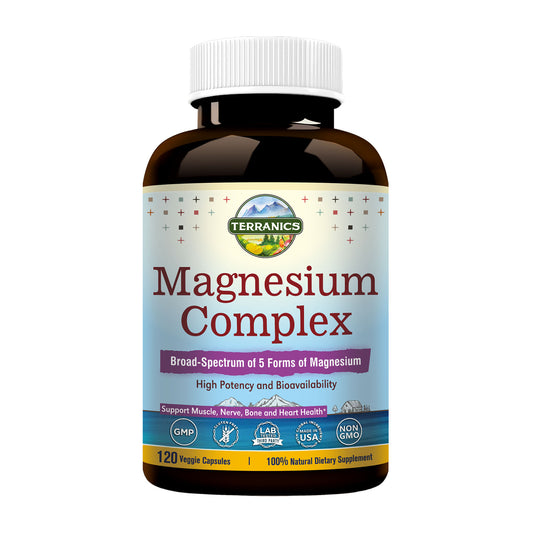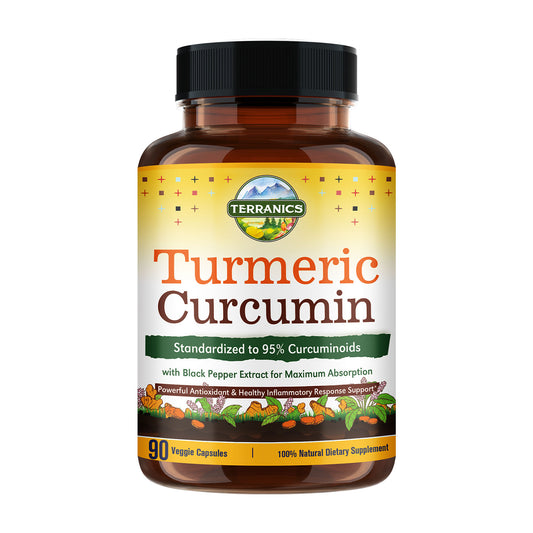
Nature has bestowed upon us a treasure trove of medicinal plants, and among them, Pulsatilla, also known as Pasque flower or Wind flower, stands as a remarkable herb with a history spanning centuries. In this comprehensive blog post, we embark on a journey to explore the multifaceted nature of Pulsatilla, delving into its rich heritage, diverse uses, potential benefits, and possible side effects. Join us as we unravel the secrets of this remarkable herb and unlock its full potential.
Pulsatilla: A Botanical Marvel
Botanical Classification and Habitat:
Pulsatilla, scientifically known as Pulsatilla vulgaris, belongs to the Ranunculaceae family. It is a perennial herbaceous plant that predominantly thrives in the temperate regions of Europe and Asia. Understanding its botanical classification and natural habitat provides us with valuable insights into its characteristics and growth patterns.
Morphological Features and Growth Patterns:
Pulsatilla is characterized by its unique morphological features. It typically features vibrant purple bell-shaped flowers that bloom in early spring, before the emergence of its fern-like leaves. Exploring the growth patterns, including its root system and reproductive mechanisms, sheds light on the resilience and adaptability of this botanical marvel.
Traditional Significance and Cultural Uses:
Throughout history, Pulsatilla has held significant cultural and traditional importance. Indigenous communities in Europe and Asia have incorporated Pulsatilla into their folklore, rituals, and healing practices. Unveiling the traditional significance and cultural uses of Pulsatilla deepens our understanding of its diverse applications.
Traditional Uses of Pulsatilla
Traditional Medicine Systems and Pulsatilla:
Pulsatilla has been an integral part of various traditional medicine systems, including Traditional Chinese Medicine (TCM) and Ayurveda. Exploring its usage in these systems provides insights into how ancient practitioners harnessed its therapeutic properties to address a wide range of ailments.
Historical Applications in Folk Remedies:
Pulsatilla has been revered for its versatility in addressing various health concerns. Historical records reveal its use in folk remedies for conditions such as digestive disorders, respiratory ailments, menstrual irregularities, and more. Examining the historical applications of Pulsatilla helps us appreciate its long-standing reputation as a natural remedy.
Spiritual and Symbolic Significance of Pulsatilla:
Beyond its medicinal uses, Pulsatilla holds spiritual and symbolic significance in different cultures. It is associated with concepts of renewal, protection, and transformation. Exploring the spiritual and symbolic aspects of Pulsatilla deepens our connection with its essence and cultural heritage.
The Science Behind Pulsatilla's Therapeutic Effects
Phytochemical Composition of Pulsatilla:
Pulsatilla's therapeutic effects can be attributed to its rich phytochemical composition. It contains a variety of bioactive compounds, including alkaloids, flavonoids, terpenoids, and saponins. Understanding the phytochemical composition of Pulsatilla provides a scientific basis for its potential health benefits.
Bioactive Compounds and Their Potential Health Benefits:
Each bioactive compound present in Pulsatilla contributes to its diverse range of potential health benefits. Alkaloids, such as ranunculin and anemonin, exhibit anti-inflammatory and analgesic properties. Flavonoids, such as quercetin, possess antioxidant and antimicrobial effects. Exploring the potential health benefits of Pulsatilla's bioactive compounds sheds light on its therapeutic potential.
Pharmacological Studies and Experimental Evidence:
Scientific research has conducted numerous pharmacological studies to investigate the therapeutic effects of Pulsatilla. These studies have explored its anti-inflammatory, antimicrobial, antispasmodic, and immunomodulatory properties. Examining the findings of these studies provides valuable insights into the mechanisms behind Pulsatilla's efficacy.
Pulsatilla in Homeopathy
Principles of Homeopathy and Pulsatilla's Role:
Homeopathy operates on the principle of "like cures like." Pulsatilla, in homeopathic preparations, is believed to address symptoms that it could produce in larger doses. Understanding the principles of homeopathy and Pulsatilla's role within this system helps us grasp its applications and potential benefits.
Homeopathic Remedies and Their Applications:
Homeopathic practitioners often prescribe Pulsatilla for a range of conditions, including anxiety, restlessness, insomnia, respiratory ailments, and menstrual disorders. Exploring the various homeopathic remedies that incorporate Pulsatilla provides insights into its specific applications and the experiences of patients.
Clinical Evidence and Case Studies:
Clinical evidence and case studies play a crucial role in validating the efficacy of Pulsatilla in homeopathy. Examining the outcomes of thesestudies offers a glimpse into the real-world experiences of individuals who have benefited from Pulsatilla treatment. It also provides a basis for further research and exploration of its potential therapeutic applications.
Managing Menstrual Disorders with Pulsatilla
Pulsatilla and Female Reproductive Health:
Pulsatilla has a long history of use in addressing menstrual disorders and other female reproductive health issues. Understanding its effects on the female reproductive system and hormonal balance helps us appreciate its potential role in managing menstrual irregularities.
Menstrual Irregularities and Pulsatilla's Role:
Pulsatilla is often recommended for menstrual irregularities, such as irregular cycles, painful periods, and hormonal imbalances. Exploring the mechanisms by which Pulsatilla may regulate menstrual cycles and alleviate related symptoms enhances our understanding of its potential benefits.
Alleviating PMS Symptoms and Hormonal Imbalances:
Premenstrual syndrome (PMS) can cause physical and emotional discomfort for many individuals. Pulsatilla, with its potential to alleviate PMS symptoms and balance hormonal fluctuations, offers a natural alternative for managing these challenges. Understanding the effects of Pulsatilla on PMS symptoms and hormonal imbalances provides insights into its potential therapeutic applications.
Respiratory Health and Pulsatilla
Pulsatilla and Respiratory Conditions:
Pulsatilla has traditionally been used to address various respiratory conditions, including coughs, colds, bronchitis, and sinusitis. Exploring its potential effects on the respiratory system helps us understand how it may support respiratory health.
Coughs, Colds, and Sinusitis: Pulsatilla's Potential:
Pulsatilla possesses expectorant properties and may help alleviate coughs, colds, and sinusitis by promoting mucus clearance and reducing inflammation. Examining its potential mechanisms of action and clinical evidence enhances our understanding of its role in managing respiratory conditions.
Expectorant Properties and Mucus Clearance:
The expectorant properties of Pulsatilla make it valuable in promoting mucus clearance and relieving congested airways. Understanding how Pulsatilla aids in expectoration and its potential benefits for respiratory health provides insights into its therapeutic applications.
Exploring Pulsatilla's Digestive Benefits
Digestive Disorders and Pulsatilla:
Pulsatilla has been historically used to address various digestive disorders, including gastritis, indigestion, acid reflux, and irritable bowel syndrome (IBS). Exploring its potential effects on the digestive system helps us understand how it may promote digestive health.
Gastritis, Indigestion, and Acid Reflux: Pulsatilla's Soothing Effects:
Pulsatilla is believed to have soothing effects on the digestive system, making it valuable for conditions such as gastritis, indigestion, and acid reflux. Examining its potential mechanisms of action and clinical evidence enhances our understanding of its role in managing digestive disorders.
Gut Motility and Pulsatilla's Potential Role:
Pulsatilla's effects on gut motility may contribute to its potential benefits for digestive health. By regulating intestinal contractions, it may help alleviate symptoms associated with conditions like IBS. Exploring the impact of Pulsatilla on gut motility and its potential therapeutic applications provides valuable insights.
Pulsatilla for Healthy Skin
Skin Conditions and Pulsatilla's Therapeutic Applications:
Pulsatilla has been traditionally used to address various skin conditions, including eczema, acne, rashes, and dermatitis. Understanding its potential effects on the skin helps us appreciate its therapeutic applications in dermatology.
Anti-inflammatory and Antimicrobial Properties:
Pulsatilla exhibits anti-inflammatory and antimicrobial properties, which may contribute to its efficacy in managing skin conditions. Exploring the mechanisms by which Pulsatilla acts on the skin enhances our understanding of its potential benefits.
Wound Healing and Dermatological Preparations:
Pulsatilla's potential to accelerate wound healing and its use in dermatological preparations make it a valuable component in skincare products. Examining its effects on wound healing and the development of dermatological formulations provides insights into its applications in maintaining healthy skin.
Understanding Potential Side Effects and Precautions
Allergic Reactions and Sensitivities:
While Pulsatilla is generally considered safe, some individuals may experience allergic reactions or sensitivities. It is essential to be aware of any known allergies to related plants or botanicals in the Ranunculaceae family before using Pulsatilla. If any signs of an allergic reaction, such as skin rash, itching, or difficulty breathing, occur, immediate medical attention should be sought.
Digestive Upset and Gastrointestinal Reactions:
In rare cases, Pulsatilla can cause digestive upset or gastrointestinal reactions, such as nausea, vomiting, or diarrhea. Individuals with pre-existing gastrointestinal conditions should exercise caution when using Pulsatilla. It is advisable to start with a low dosage and monitor for any adverse reactions. If any gastrointestinal symptoms persist or worsen, it is recommended to discontinue use and consult a healthcare professional.
Drug Interactions and Precautionary Measures:
Pulsatilla may interact with certain medications, especially those that affect blood clotting, immune function, or liver enzymes. It is important to consult a healthcare professional or a qualified herbalist before using Pulsatilla if you are taking any prescription medications or have any underlying medical conditions. They can provide guidance on potential drug interactions and advise on appropriate dosage and usage.
Conclusion
Pulsatilla, with its rich historical legacy and diverse therapeutic properties, holds immense potential as a natural remedy. From its traditional uses in various healing systems to its applications in homeopathy, Pulsatilla continues to captivate the interest of researchers, herbalists, and individuals seeking natural alternatives for their health concerns.
While Pulsatilla shows promise in addressing menstrual disorders, respiratory conditions, digestive issues, and promoting healthy skin, it is important to approach its usage with caution. Being aware of potential side effects, allergic reactions, and drug interactions allows for safe and responsible integration of Pulsatilla into healthcare practices.
As scientific research continues to unfold the mechanisms behind Pulsatilla's therapeutic effects, it is crucial to stay informed and consult healthcare professionals or knowledgeable practitioners for personalized advice. By embracing the potential of Pulsatilla and harnessing its benefits, we can tap into the power of nature's bounty and nurture our well-being in a holistic and sustainable way.




